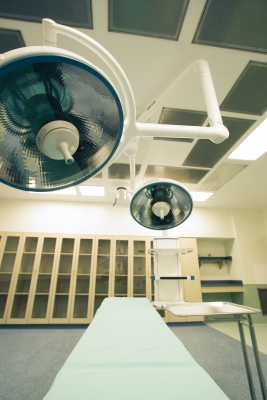The Centers for Medicare & Medicaid Services (CMS), an agency of the U.S. Department of Health and Human Services, published proposed rules this spring that would amend the fire safety standards for hospitals, long-term care facilities, ambulatory surgery centers, hospice inpatient, and many other healthcare facilities that participate in Medicare and Medicaid programs.
CMS proposed adopting the 2012 editions of the Life Safety Code, which includes measures devised by the National Fire Protection Association, and includes the Healthcare Facilities Code. A key change is a requirement that buildings over 75 feet tall have sprinkler systems throughout the structure. Existing buildings would have 12 years to install them.
Automatic sprinkler systems will be required in all habitable areas, closets, roofed porches, balconies, and decks of new residential health care facilities. CMS also strongly encouraged existing facilities to be sprinklered in all habitable areas. Under the new provisions, sprinklers also must be installed in attics of new and existing residential facilities if the attic is used for living purposes, storage, or the housing of fuel-fired equipment. Or, it must have a heat detection system, be of noncombustible construction, or be constructed of fire retardant treated-wood.
Newly-constructed facilities would have to install approved smoke alarms inside every sleeping room, outside every sleeping area, and on all levels within a residential unit. CMS is soliciting public comment regarding whether that requirement should be applied to existing facilities, as well.
(http://www.jdsupra.com/legalnews/new-federal-health-care-facility-regulat-93481/)
Related Stories
Codes and Standards | Apr 12, 2021
WoodWorks and Think Wood release first Mass Timber Design Manual
Interactive collection of information on mass timber products, design best practices, taller wood construction and sustainability.
Codes and Standards | Apr 8, 2021
Sensors used in tunable lighting systems found to have high reliability
DOE study investigated items used to control lumen depreciation, chromaticity shifts, and changes in drivers.
Codes and Standards | Apr 7, 2021
Red tape ruined the U.K.’s home retrofit program
Lessons learned could help US avoid that fate.
Codes and Standards | Apr 6, 2021
Lendlease achieves net-zero carbon in Boston, Chicago multifamily portfolio
New projects in New York, Los Angeles on track to reach goal.
Codes and Standards | Apr 5, 2021
Specification for sliding door, lift and slide roller assemblies updated
Addresses market trend toward heavy sliding doors.
Codes and Standards | Apr 5, 2021
Construction employment rebounds in March following February drop
Rising costs, supply-chain woes, and cancellations threaten outlook.
Codes and Standards | Apr 2, 2021
Intl. Code Council’s new development system could be a brake on building decarbonization
Local governments lose influence on creating new energy efficiency rules.
Codes and Standards | Apr 1, 2021
Cuomo proposes strengthened NY building codes to boost efficiency
Would apply to appliance, equipment efficiency and reduce water use.
Codes and Standards | Mar 25, 2021
N.C.’s Outer Banks’ communities struggle for ways to keep the sea from overrunning them
Tax hikes for beach replenishment offer temporary solution.
Codes and Standards | Mar 24, 2021
Perkins&Will’s D.C. office pledges to eliminate embodied carbon in commercial interiors
Firm aims to reach goal on all designs by 2030.

















